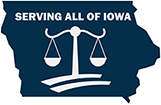- Hartley Personal Injury Attorneys
- Phone: 641-792-3595
- Directions
Life can be abruptly changed by accidents and injuries. During these challenging moments, personal injury lawyers are essential. They advocate for those harmed by negligence, helping them obtain rightful compensation. This article explores the significant role personal injury lawyers play in guiding individuals through their claims and aiding in recovery.
The degree of accident fault in a personal injury claim is an individual's percentage of responsibility for an accident and the resulting losses or damages. In Iowa, if the injured person is partially at fault, this degree of fault will reduce the amount of compensation that can be recovered. Iowa lawyers can help accident victims prove the other party’s liability to pursue fair compensation.
Impact of Negligence Laws on Accident Fault
Negligence laws vary by state. In Iowa, they are based on modified comparative fault. Under this standard, a jury or judge assigns a percentage of fault to each party involved in the accident, ranging from no fault to 100 percent at fault.
When an injured person is partially responsible for a crash, there are two potential outcomes:
1. No Compensation: If the injured party’s degree of fault is more than half (51 percent or higher), they are prevented from recovering any damages.
2. Reduced Compensation: If the degree of fault is 50 percent or less, damages can still be recovered but will be reduced by the percentage of fault assigned.
Given the significant impact of fault percentages, it may be in the injured person’s best interest to seek legal counsel. An attorney can help establish most or all fault with the other party.
Evidence to Reduce Degree of Fault
Proof is crucial in establishing the other party’s responsibility. Key pieces of evidence include:
- The accident report
- Photographs of the accident scene
- Eyewitness statements
- Observations from responding police officers
Lawyers at Walker, Billingsley & Bair in Iowa can assist clients in collecting this evidence to strengthen their personal injury claims.
Many personal injury cases are resolved through negotiations with an insurance company. However, alternative dispute resolutions (ADRs) can help avoid taking the case to trial. ADR methods include arbitration and mediation.
Arbitrating a Personal Injury Case
Arbitration is an alternative to litigation that involves a less formal hearing process. An arbitrator:
- Reviews the facts and evidence
- Listens to witness testimony
- Makes a final decision
Arbitration is less costly and time-consuming than litigation. It can be binding or non-binding, meaning the arbitrator's decision may or may not be final. Both parties must agree on the arbitrator, and hearings can be held in various settings for convenience. Evidence presented may include tangible items, medical records, pictures, video footage, and other documentation. Witnesses provide testimony and are cross-examined.
Mediating a Personal Injury Case
Mediation is an even less formal ADR method. It involves a mediator, an unbiased third party who facilitates discussion and negotiation between parties. The mediator does not make a decision or ruling but helps both parties reach a mutually satisfactory agreement.
The mediation process usually starts with both parties meeting together, followed by separate discussions facilitated by the mediator. Offers, demands, and questions are exchanged through the mediator. Compromises are often necessary, and if mediation fails, the case may proceed to trial.
Pros and Cons of ADRs
Pros:
- Less time, money, and hassle compared to litigation
- Parties are more involved in the decision-making process
- Allows for a more rational and calmer approach to dispute resolution
Cons:
- May incur costs without resolving the dispute, leading to additional litigation expenses
Hit-and-run bicycle accidents are common and pose significant challenges for victims seeking compensation. In 2015, over 800 pedalcyclists died in accidents, and irresponsible drivers often flee the scene.
Finding the Responsible Driver
f you were injured by a hit-and-run driver, there are ways to identify them:
- Drivers sometimes turn themselves in
- Law enforcement may use traffic or surveillance camera footage and eyewitness testimonies
- Publicizing the incident via local news may lead to tips from viewers
Once the driver is identified, they face criminal charges, and you can file a claim with their insurer or sue them directly.
Obtaining Compensation
If the driver is identified, you can file a claim with their insurance company. If the driver flees, your damages may be covered under your auto insurance policy’s uninsured/underinsured motorist coverage (UM/UIM). UM/UIM covers instances where:
- The driver doesn’t have insurance
- The driver’s insurance is insufficient
- The driver flees the scene
UM/UIM coverage extends to traffic accidents involving pedestrians or bicyclists. Check your policy for coverage details.
We Are Here To Help
Remember, you are not alone in recovering from your injuries. We have helped thousands of Iowans through their physical, emotional, and financial recoveries. If you have questions about what you are going through, feel free to call our office for your confidential injury conference. We will take the time to listen to you and give you our advice concerning your injury matter at no cost or risk to you.
Free Book at No Cost
If you are not ready to speak with an attorney yet but would like to learn more about Iowa injury cases including tips about how you can avoid making common costly mistakes request a copy of our Iowa Personal Injury book which includes 14 myths about Iowa injury cases and 5 things to know before hiring an attorney.
If you have specific questions about your injury matter feel free to call our office to speak with our Injury team at 641-792-3595 or use our Chat feature by clicking here 24 hours a day/7 days per week. Your information will remain confidential and there is no cost or obligation.

